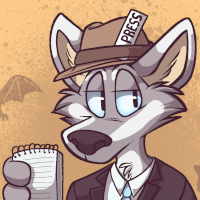Cat’s Pawn and Cat’s Gambit – book reviews by Fred Patten.
by Patch O'Furr
Submitted by Fred Patten, Furry’s favorite historian and reviewer.
“Dear Patch; Here is an unpublished old review, written years ago for Cubist’s Anthro site and left unpublished when Anthro folded.”
Cat’s Pawn, by Leslie Gadallah.
NYC, Ballantine Books/del Rey, March 1987, paperback 0-345-33742-5 $2.95 (262 pages).
Cat’s Gambit, by Leslie Gadallah.
NYC, Ballantine Books/del Rey, March 1990, paperback 0-345-36478-3, $3.95 (247 pages).
 Despite being action-packed, this duo of space operas is unusually pessimistic, even despondent. Cat’s Pawn begins with a framing story set on Terra centered on Talan, the Oriani ambassador to Terra, glumly failing in his mission to win support from the Terrans in their struggle against the interstellar spreading Kazi. Symptomatic of the problem is that the Oriani do not wear clothes and look like large, bipedal housecats; and what Terran can take a funny-animal cat seriously?
Despite being action-packed, this duo of space operas is unusually pessimistic, even despondent. Cat’s Pawn begins with a framing story set on Terra centered on Talan, the Oriani ambassador to Terra, glumly failing in his mission to win support from the Terrans in their struggle against the interstellar spreading Kazi. Symptomatic of the problem is that the Oriani do not wear clothes and look like large, bipedal housecats; and what Terran can take a funny-animal cat seriously?
The majority Terran attitude is similar to the American isolationists in 1940 who did not see any need for America to get involved in World War II. Talan stoically watches a TV interview with an average Terran:
“‘Now, you see, that’s just what I mean. They’re not people at all; they’re furry sons-a-bitches. They’re all over the place, trying to take over – furry ones, scaly ones, long ones, round ones, and some with nineteen legs. I tell you, mister, I like my people to look like people. And that’s all I got to say.’ He relinquished the mike, waved at the camera, and strode off.” (p. 11)
Cat’s Pawn opens with Melissa Larkin, a Terran woman who needs to see Talan because, fifty years earlier, he knew her now-dead grandfather, Bill Anderson, one of the few Terrans who ‘went native’ on the Oriani homeworld, Omnicron Orionis. Talan cannot help her, but the query introduces the reader to the Oriani:
“She was determined not to stare, though talking person to person with someone who looked a lot like a big-headed pussy cat gave her a funny feeling. Of course he was rather large for a pussy cat. The tips of his big ears came level with her nose and would have been higher except for the slightly forward posture balanced by the long, swinging tail.” (p. 1)
and
“55 kilos of highly intelligent being with long fangs that hung down below the line of his mouth like ivory daggers was nothing to giggle about.” (p. 5)









